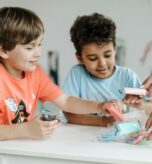Do we teach critical thinking or memorization of facts in school? Simply recognizing and remembering a thing gives the impression that knowing is superficial and rote information. The listener may get the impression that the matter has been adopted on some level but not sufficient for application in a new situation. Students must be able to distinguish between facts and assumptions. Memorizing things can even give students a false impression of their own competence. Students think they know and do not find out, as they might do if they thought and hypothesized about the topic.
The importance of critical thinking has been emphasized even more. We live in the time of quantitatively the biggest fake news and swizzles. Students must learn to think and recognize them. Students must be able to manage large sets of issues and at the same time understand how things are connected to each other and try to assess the reliability of the information.
The school must give up teaching individual bits of information and empty sentences and move on to practicing a broader understanding. Information processing skills are central. The multiple-choice tasks do not support the student’s processing skills, but give pictures of the one-off nature of the fact, thinking it is right or wrong.
STEAM (Science, Technology Engineering, Art and Mathematics) subjects have gained a strong foothold in schools for a reason. In the teaching of these, it is important that the students learn to ask questions and find problematic points in the topics discussed. Humans have a natural desire to try to find out what causes the behaviour of a certain phenomenon. In the natural sciences, observations are first tried to be explained with the help of a simple model. In describing the model, concepts are needed that are based on the variables observed in the phenomenon, measurable quantities and the dependencies between them. The level of in-depth knowledge of natural scientific knowledge has been reached when it is understood what the knowledge is based on, how it was obtained and how it can be applied.
Every teacher has seen a situation where a student enjoys understanding a new thing. She/he has used his thinking, the result has been reached with the help of his own thinking. The joy of learning is visible. The student experiences thinking as his superpower.
Teaching or learning thinking has been debated for centuries. Emphasis is placed on learning abstract rules, emphasizing grammar and memory. Others have emphasized the importance of the language of logic, others added Latin and Greek to the list of subjects as developers of thought.
Systematic practice of thinking takes a lot of time. The development of thinking does not happen in an instant. Thinking can be learned. The traditional image of a lesson in which the teacher asks questions and the students answer must be changed to one in which the students ask questions and the teacher guides them to find answers. This is a good way to start learning to think.
Cogito, ergo sum” (Latin: “I think, therefore I exist”) René Descartes, 1596-1650
Source: Rossi, Maarit. “Our Ability to Think is Our Superpower” FESIN Special Edition, 2024.




